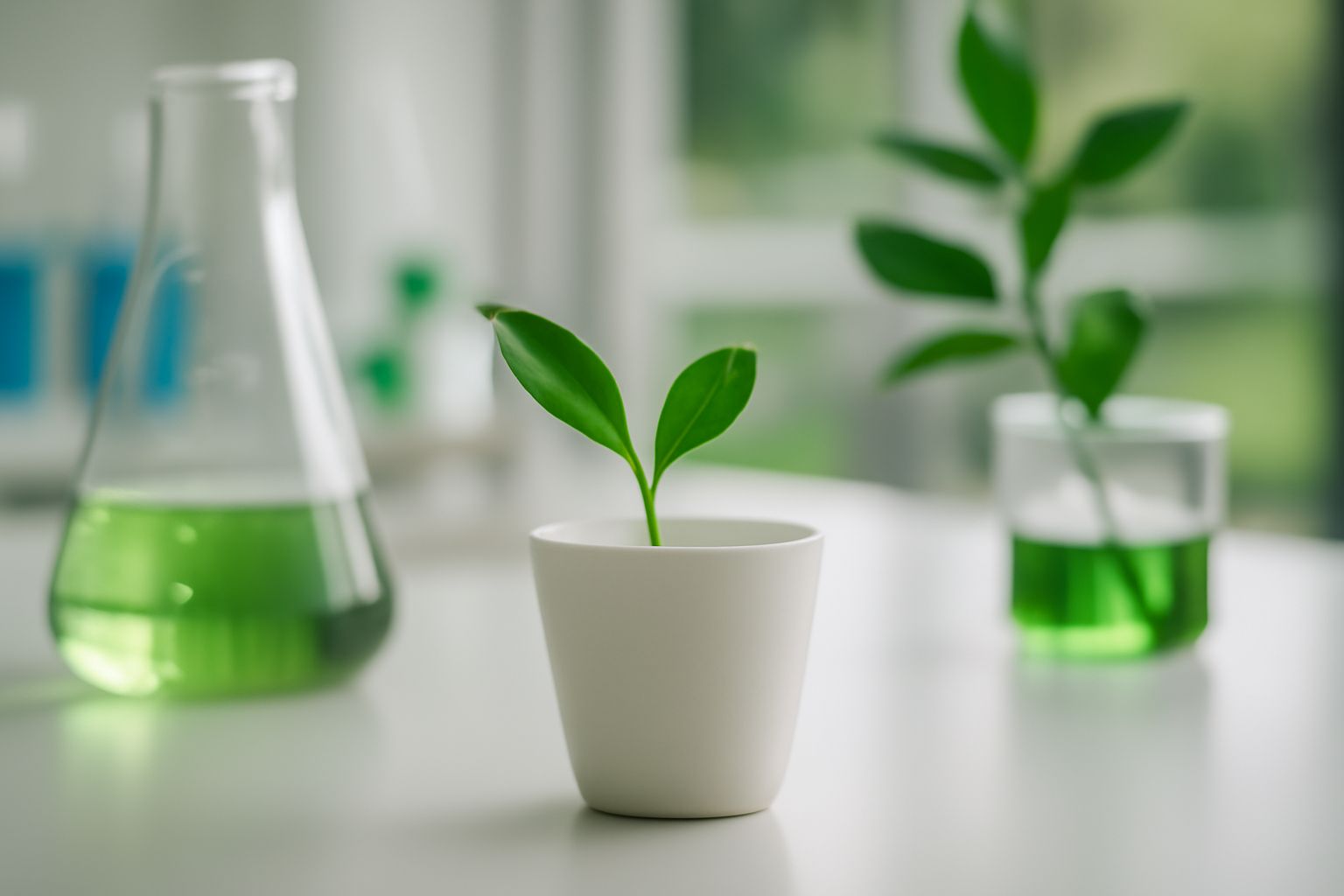Your cart is empty.
shop now
Your cart is empty.
shop now
Many businesses are struggling to balance efficient testing and sustainability goals. Lab equipment choices play a huge role in this shift.
Laboratory crucibles serve as essential tools in tests that impact green chemistry, making them crucial for more sustainable practices in science and industry.

As I see testing labs demand more planet-friendly materials, I notice the choices we make in everyday equipment can have a ripple effect. Let's explore why laboratory crucibles are now at the center of the green transformation and how they support a new age in chemistry.
Many scientists want to create new materials without pollution, but having the wrong tools means they could create more waste than they solve.
Laboratory crucibles, especially those made from safe and recycled materials, are essential in developing eco-friendly products because they let researchers test reactions cleanly and safely.
When I work in material research, I see how choice of crucible shapes the outcome. Modern eco-friendly crucibles help limit contamination, require less energy to heat, and can even be recycled after use. Some labs pick ceramics since they're durable and resist high heat. Others choose aluminum or platinum for precise heating.
Here's a quick look at how different crucible materials stack up for green labs:
| Material Type | Eco-Friendliness | Common Use | Recyclability |
|---|---|---|---|
| Ceramics | Very High | Most organic/inorganic reactions | Yes (high) |
| Recycled Aluminum | High | Thermal analysis, fast heating cycles | Yes (easy) |
| Platinum | Moderate | Precise and repeated tests | Yes (expensive but sustainable) |
| Glass | Medium | Low/mid-temp reactions | Yes |
New choices in crucible design support green chemistry—where every tool is measured for environmental safety.
Source: Journal of Chemical Education
Manufacturers face pressure from labs to produce equipment that meets both strict performance and tough environmental rules.
Green chemistry is pushing crucible makers to use fewer resources, cut emissions, and choose renewable or recycled raw materials for production.
I see many makers now using refractory ceramics or eco-certified metals to align with lab client needs. Others switch to low-energy manufacturing, reducing the carbon impact of each batch.
Here's what I noticed in recent factory visits and news reports:
| Change in Manufacturing | Reason (Sustainability Goal) | Impact on Labs |
|---|---|---|
| Switch to renewable energy sources | Reduce carbon footprint | Less embodied emissions in purchased crucibles |
| Use of recycled feedstock | Cut raw material waste | Lower material origin concerns for eco-labels |
| Green packaging & shipping | Minimize packaging waste | Fewer single-use plastics in lab deliveries |
| Product lifecycle analysis | Document & improve sustainability | Labs can report lower total process impact |
As demand grows, more companies join the circular economy, building an industry that is both profitable and responsible.
Industry Report Reference: ResearchGate
Many industries want to meet new green policies, but replacing core lab tools often seems risky or costly if the tools do not meet safety and accuracy which is required in quality control.
Laboratory crucibles have become secret champions in green industry, enabling safer, cleaner, and more repeatable high-temperature processes while meeting tight environmental standards.
I have seen sustainable testing protocols use eco-friendly crucibles for accurate results in metals, ceramics, and polymer labs. Industry regulations now often ask manufacturers to document the "green" sourcing of their consumables.
See how crucibles support sustainable progress:
| Industrial Use Case | Crucible Choice | Green Chemistry Outcome | Standard/Regulation |
|---|---|---|---|
| Metal alloy purity testing | Recycled ceramic/aluminum | Lower contamination, less scrap | ISO 14001 |
| Pharmaceutical development | Low-leach platinum | No impurities, safer drugs | USP 232 (source) |
| Polymer property tests | Sealed ceramic | Accurate heat tests, zero emission | ASTM E2550-11 |
Standard-compliant crucibles have reduced waste and helped big industries meet strict sustainability rules without sacrificing technical performance.
Testing can create lots of waste and emissions, especially from single-use labware and high-temperature processes if not managed well.
Lab crucibles, when designed for reuse or easy recycling, greatly reduce the total waste and emissions generated from repeated testing cycles in labs.
In my daily work, I help labs set up programs to reuse or responsibly dispose of old crucibles. Some companies offer "take-back" services, turning their own products into secondary raw materials. I also compare the environmental footprints between disposable and reusable products before making big purchase choices.
Here’s a summary of environmental gains:
| Method | Waste Reduction | Emission Impact | Main Benefit |
|---|---|---|---|
| Using reusable ceramic crucibles | ~80% less waste | Lower since fewer are produced | Saves cost and landfill space |
| Switch to recycled metal crucibles | ~50% less raw waste | Lower manufacturing emissions | Reduces total supply chain impact |
| Manufacturer take-back program | Crucibles become raw material | Less transportation waste | Supports sustainable manufacturing |
Scientific reviews show such programs can cut as much as 70-80% of labware waste per year.
Data source: Nature Sustainability
Laboratory crucibles play an important role in green chemistry, supporting both sustainability and reliable results in all modern scientific labs.
Contact REDTHERMO Technical SupportTechnical support email: